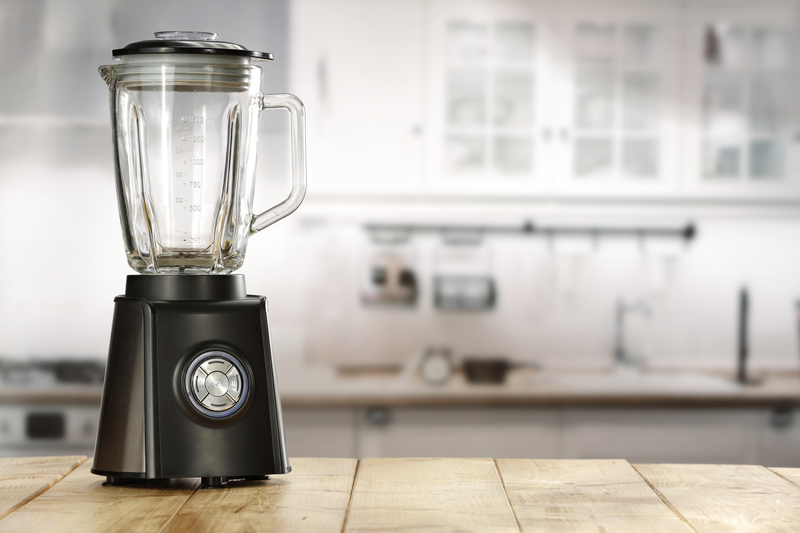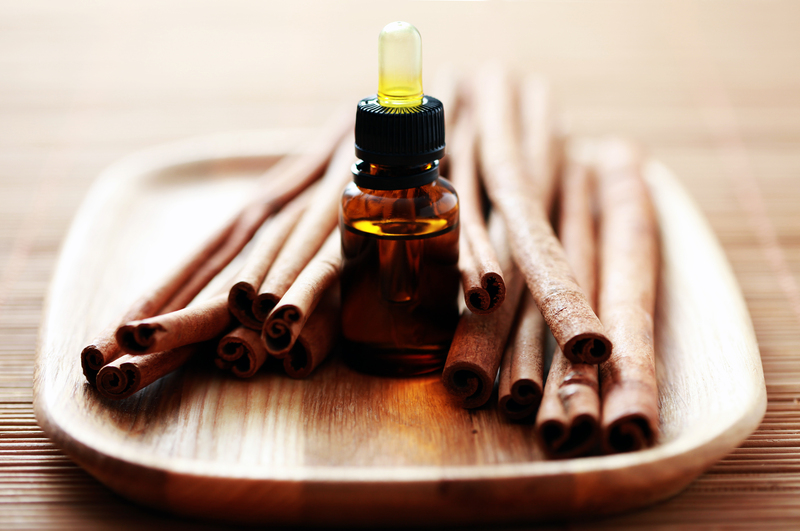Beat the Damp: How to Remove Persistent Smells Easily
Posted on 19/06/2025
Dampness and the persistent smells it causes can make your living space feel uncomfortable and unhealthy. Whether it's that musty odor in the basement, a strange smell from clothes or furniture, or a lingering sour scent in the bathroom, tackling dampness is essential not only for comfort but also for your health. In this comprehensive guide, we'll explore practical, science-backed solutions to eliminate damp smells for good and restore freshness to your home.
Understanding Damp and Persistent Odors
Before you can remove persistent smells, it's crucial to grasp what causes them. Dampness in homes typically arises from one or more of these issues:
- Poor ventilation
- Water leaks or ingress (pipes, roofs, walls)
- Condensation in bathrooms, kitchens, or laundry rooms
- High humidity levels
These issues promote the growth of mold, mildew, and bacteria, which are the primary culprits behind musty smells. Over time, these odors can permeate carpets, furniture, clothing, and even walls, making them hard to eradicate without a targeted approach.
Why Are Damp Smells Harmful?
Musty, persistent smells are not just unpleasant; they can also be signs of underlying health hazards. Mold and damp environments are linked to:
- Allergic reactions (sneezing, coughing, watery eyes)
- Asthma attacks or aggravation of respiratory conditions
- Chronic sinus infections
- Lowered indoor air quality
Therefore, learning how to beat the damp and remove persistent smells with ease is crucial for your health and wellbeing.

Step-by-Step Guide to Removing Persistent Damp Odors
1. Find the Source of the Moisture
The key to beating damp is identifying the source. Here's how you can track it down:
- Inspect walls, ceilings, and floors: Look for wet spots, bubbles under paint, or dark stains.
- Check for leaks: Examine plumbing, window frames, roofs, and basements for water ingress.
- Monitor humidity: Use a hygrometer to check if humidity exceeds 60%--this encourages mold growth.
If you can't find a visible source, there might be hidden leaks. Consider hiring a professional if damp odors persist despite your efforts.
2. Improve Ventilation
Proper air flow is your best defense against damp smells. Use these techniques to keep the air moving:
- Open windows and doors daily, weather permitting, to let fresh air in.
- Use exhaust fans in bathrooms and kitchens to remove steam and odors.
- Install air bricks or vents in problem areas like basements.
- Consider a dehumidifier, especially in areas prone to persistent moisture.
Good ventilation helps remove stale smells, prevents condensation, and limits the conditions that allow mold and mildew to thrive.
3. Dry Out the Affected Area Entirely
To completely banish persistent odors, you must ensure all dampness is eradicated. Here's how:
- Wipe down wet surfaces and furniture.
- Boost heat by turning on central heating or portable heaters.
- Use silica gel packs or moisture absorbers in cupboards and corners.
- Allow carpets, rugs, and upholstery to air dry--take them outside if possible.
*Do not cover or paint over damp patches before thoroughly drying and treating them, as this can trap moisture and worsen the smell over time.*
4. Clean and Neutralize Odors
After drying, it's time to address the lingering musty odors themselves. Odor removal is most effective when it targets both the air and the affected materials:
- Wash soft furnishings: Launder curtains, cushion covers, bed linen, and clothes with baking soda or vinegar for added deodorizing power.
- Clean hard surfaces: Mop floors and wipe down walls with a mixture of water and white vinegar (1:1 ratio) or a mold-cleansing solution.
- Sprinkle baking soda: Dust carpets, mattresses, and upholstery with baking soda. Leave for a few hours, then vacuum thoroughly.
- Disinfect with alcohol or hydrogen peroxide: Use these on mold-prone surfaces (always test a small area first).
These steps will help you remove persistent smells quickly and safely without the use of harsh chemicals. For strong or recurring odors, repeat this process regularly until the smell is eliminated.
5. Attack Mold and Mildew at the Source
Nothing creates a stubborn damp smell like mold or mildew. If you spot any growth, tackle it immediately:
- Use a mold-removing spray from the store, or make your own with bleach (1 cup in 1 gallon water). Always wear gloves and a mask.
- Scrub affected surfaces with a stiff brush until the mold is completely removed.
- Seal cleaned areas--especially in bathrooms, kitchens, or basements--with a mold-resistant primer to prevent regrowth.
_Caution:_ Never mix bleach and ammonia-based cleaners, as this can produce toxic fumes!
Natural and DIY Solutions to Remove Persistent Smells
If you prefer natural remedies to beat the damp, here are some time-tested, eco-friendly methods:
- Baking soda: Naturally absorbs odors from the air and surfaces. Spread it on carpets, shoes, or any smelly area.
- White vinegar: Its acidic nature kills bacteria and neutralizes musty odors. Place bowls of vinegar in affected rooms for a few hours.
- Activated charcoal: Pack a few sachets and leave them in closets, basements, or bathrooms--charcoal traps smell molecules.
- Essential oils: Add a few drops of lavender, tea tree, or eucalyptus oil to your cleaning water for a fresh, clean scent.
- Coffee grounds: Place bowls of dry used grounds around the house to neutralize sour smells.
These DIY odor-removal techniques are safe, inexpensive, and can make a big difference in keeping your home fresh.
Long-Term Solutions: How to Prevent Damp Smells from Returning
You don't want those stubborn damp odors coming back. Here's how to make your home smell clean all year round:
Upgrade Insulation & Waterproofing
- Seal cracks: Use caulk to fill gaps around windows and doors.
- Install vapor barriers: Especially in basements and crawl spaces.
- Upgrade insulation: Proper insulation prevents moisture condensation on cold walls.
Maintain Proper Air Flow
- Position furniture away from exterior walls to promote air flow.
- Keep closets and cabinets slightly open to prevent stale air from being trapped.
Long-term, these steps ensure that mildew and musty smells don't have a chance to form in the first place.
Frequently Asked Questions About Removing Persistent Damp Smells
What causes persistent damp smells even after cleaning?
Sometimes the problem lies underneath the surface--moisture in the subfloor, hidden wall leaks, or ongoing condensation can allow odors to return. Professional damp proofing may be needed in severe cases.
Can air fresheners get rid of musty smells?
Air fresheners only mask the odor, but do not treat its source. To beat the damp, you must remove moisture and clean the affected area thoroughly.
How long does it take to remove a persistent smell?
With proper cleaning, ventilation, and drying, most musty odors will fade **within a few days**. Stubborn cases or deeply-set odors may take **a week or more** to completely clear.
Should I worry about health effects from damp smells?
Yes. Persistent damp-related odors often indicate mold growth. Prolonged exposure can cause respiratory problems, headaches, or worsen allergies--treat promptly for your health.

Recap: Key Takeaways to Beat the Damp and Remove Bad Smells Easily
- Find and fix the source of moisture first--don't just mask odors!
- Ventilate and dehumidify affected rooms continuously.
- Clean thoroughly with vinegar, baking soda, or specialized cleaners.
- Use natural odor absorbers like baking soda, charcoal, and coffee grounds.
- Take long-term steps to improve insulation, waterproofing, and air flow.
Conclusion: Enjoy a Fresh, Healthy Home by Beating the Damp
Persistent damp and musty smells can feel overwhelming, but with the right strategies, your home can be restored to its clean, fresh state. Start by targeting the source of the moisture, dry out the area, clean thoroughly, and keep air moving. Natural remedies and proper prevention will ensure odor-free living for the long haul. If you've struggled with tough cases, don't hesitate to consult a professional--beating the damp is essential for your family's comfort and health.
Ready to beat the damp and remove persistent smells easily? Use the tips above and make your living space a truly welcoming, healthy, and fresh environment!



